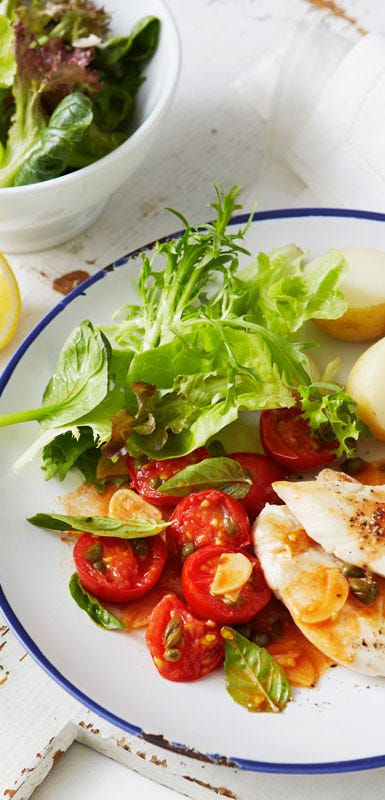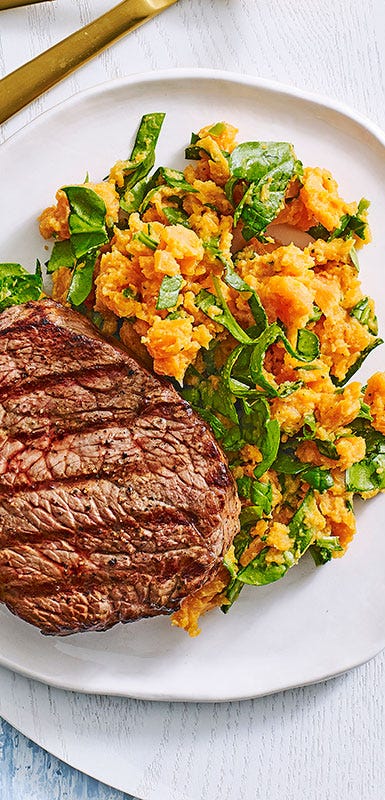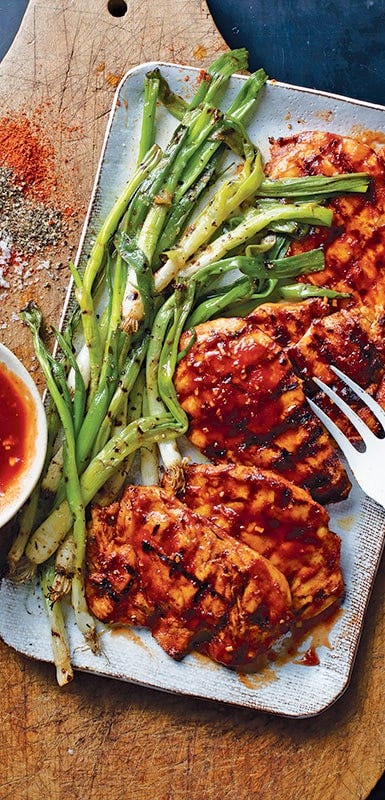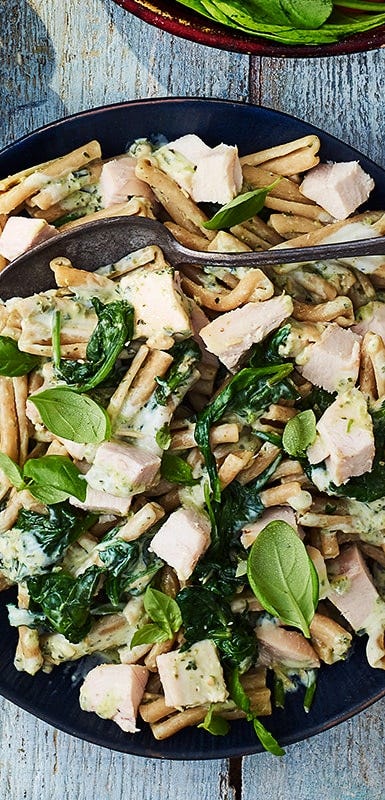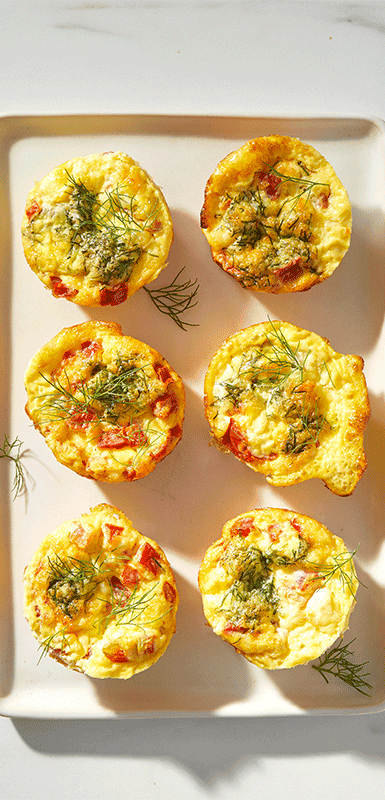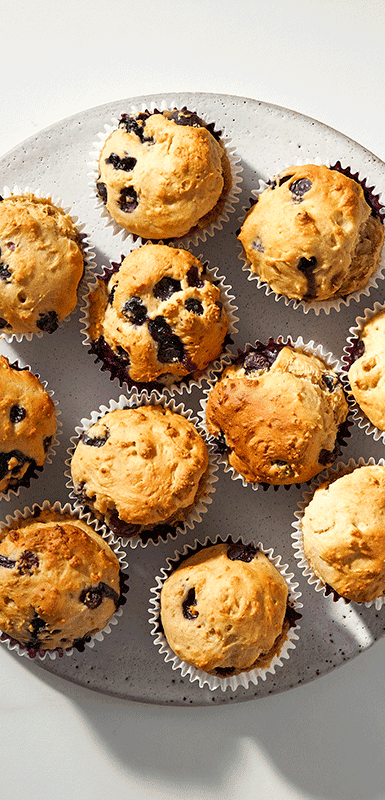How cooking at home can help you lose weight
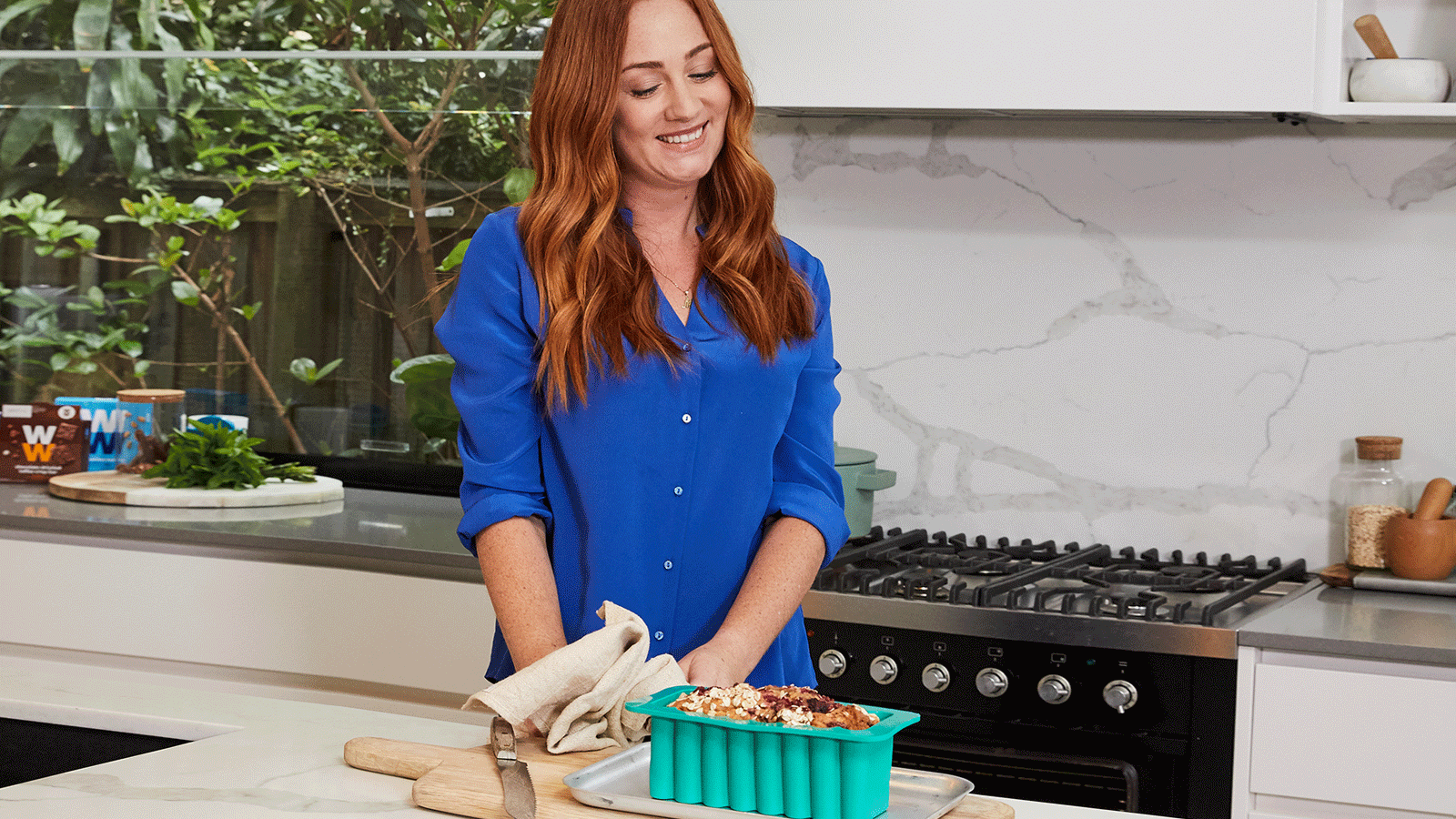

If you’ve ever scrolled through Instagram or TikTok in search of unboring recipes for weight loss, you’ve likely seen them—beautiful people whipping up beautiful meals in kitchens. They’re drizzling demi-glace, whisking grain-free batter, and brewing their own kombucha without so much as a crumb on their kitchen bench. So…that’s what home cooking is supposed to be, right? (Beep—excuse us for a second while we pull our bag of steamed veggies from the microwave.)
As enjoyable as it is to feast your eyes on someone else’s culinary skills, it can put undue pressure on making meals and that can keep you out of the kitchen. But home cooking doesn’t need to be anything fancy or complicated to be worth doing. And it’s really worth doing, especially if you’re trying to lose weight.
“Home-cooked meals tend to be lower in calories (a.k.a. kilojoules), added sugar, and sodium compared to restaurant meals,” says Julie Upton, R.D., a registered dietitian and co-founder of the nutrition news company Appetite for Health in San Francisco, United States. And the advantages don’t just stop at the nutrition label.
Here are some of the many benefits of cooking at home for weight loss—plus expert hacks to make it healthier and better for your budget, schedule, and stress level.
The benefits of cooking at home
1. You can save money
While grocery bills are higher than ever, the more meals you make at home, the easier you’ll find it to embrace cost-cutting strategies. “Cooking will feel easier and you’ll be more efficient with preparing meals,” Upton says, noting that efficiency helps you maximise your budget. For example, once you start cooking more, you can opt to buy certain foods in bulk (say, nuts and grains) and stock up on long-lasting, affordable staples such as frozen or canned produce, which are just as nutritious as fresh, since they’re preserved at peak ripeness. Don’t forget to look for more expensive things, like meat, that’s on sale. “All meat freezes well, so buy it when it’s lower priced and freeze it,” says Sherry Rujikarn, food director for WeightWatchers®. “If you’re trying to cook more, having meat in your freezer means that part of the battle is already done.”
2. You’ll be in control of portions
Having a big serving of food on your plate subtly influences you to eat more than you intend, but cooking for yourself means you can avoid that trap. “When you cook at home, you can portion out your food ahead of time versus eating with your eyes,” says Elizabeth Shaw, RDN, a registered dietitian nutritionist based in San Diego, United States. She says that by dishing out a single serving, you’ll consume fewer calories while still feeling satisfied.
You can also decide how much of each type of food to put on your plate. Roxana Ehsani, M.S., R.D., a registered dietitian nutritionist in Miami, United States, recommends the following formula:
- ½ plate = vegetables
- ¼ plate = lean protein
- ¼ plate = whole grains
While the above method is one approach, the WeightWatchers program also does this calculation for you. The WW Points algorithm takes serving sizes into account while nudging you toward choosing foods higher in fibre and protein and lower in added sugar and salt.
3. You’ll become a more confident cook
Every time you cook at home, you increase your “self-efficacy,” or your confidence in your ability to accomplish a task. This makes cooking for weight loss feel easier and less stressful. “I think the key is thinking about what dishes you and your family enjoy the most, cooking those things enough so that you feel confident, then start playing around with flavours,” says Rujikarn. For example, if you love roasting potatoes and broccoli with chicken and you learn how to do it just right, you can start to branch out. Try it one night with chilli powder and lime and serve it with tortillas, then another night use thyme, oregano, lemon zest, and garlic powder. “You don’t need to get complicated or learn every technique,” says Rujikarn. “It’s all about knowing what you like to eat and playing around with flavours.”
6 ways to cook for weight loss
1. Build dishes around healthy foods
The first step to cooking for weight loss is to get inspired by healthy recipes. Build a meal plan around well-balanced dishes, whether they are from the WeightWatchers collection of recipes and snacks, your favourite cookbooks, or other websites. Then, shop wisely and stock your kitchen so you always have what you need to whip up something good.
2. Make strategic ingredient swaps
“When you cook, you get to control what you put in your own meals, which can be really beneficial for anyone trying to eat healthier,” Ehsani says. That means you can be as picky as possible about what does—and doesn’t—go into your meal. “If you order something at a restaurant, you may only have one or two vegetables in your sandwich, omelette, or burrito. But if you make the same dish at home, you could be adding as many vegetables as you can fit into the recipe,” says Ehsani.
Other ways to choose healthier ingredients when you’re the chef in charge:
- Use whole grains instead of refined carbohydrates to increase fibre.
- Add fruits and vegetables to every meal.
- Instead of excess salt and fat, use vinegar, herbs, and spices for flavour.
- Start with lean protein sources like skinless chicken breast and black beans to keep calories, fat, and saturated fat in check.
3. Switch up how you cook
Certain methods of cooking can create a healthier end dish.
- Grilling: Cooking over a BBQ or grill uses direct heat to cook foods quickly—without needing a lot of added fat. Grills can be used to cook everything from meat and seafood to vegetables and fruit. No outdoor barbecue? Use a grill pan on the stove.
- Steaming: Placing food above a pot of boiling water creates a delicate, moist dish. This is different from boiling foods directly, which may leave some of the nutrients floating in the water. Steaming works well for vegetables and shellfish.
- Air-frying: With a fan, little to no oil, and high temperature, air fryers cook foods quickly and result in a texture that mimics your favourite fried foods. Compared to normal deep-frying, which uses a vat of oil to cook foods, “this appliance gets that restaurant-quality fried food texture for nearly 70% less fat,” says Shaw. You can turn to air-fryer recipes to do everything from roast veggies to fry chicken.
- Cooking in cast iron: They’ve been around forever, but that doesn’t mean you should overlook them. A cast-iron pan sears, sautées, and roasts without a lot of added oil (many current models and well-seasoned heirloom cast-iron skillets are non-stick).
- Roasting: Nothing is easier than assembling a tray bake meal and roasting it at high heat in the oven. Mix together some vegetables and protein (chicken breast, fish, and pork loin all roast beautifully), drizzle with a splash of extra virgin olive oil or avocado oil, season with dried spices and herbs, and roast until the meat is done and the vegetables are caramelised.
- Pressure cooking: Electric pressure cookers help you cook healthy foods fast. Dump all of the ingredients in the pot, secure the lid, and cook. Many pressure cooker recipes require 20 minutes or less.
4. Control the sugar content
Eating too much added sugar (meaning sugar that doesn’t occur naturally in food, like the kind found in fruit or milk) ups your risk for tooth cavities, type 2 diabetes, and other health issues. It can also impact your overall diet quality: Foods with added sugars often displace more nutrient-dense choices, a 2016 study in the BMJ Journal Open Heart suggests.
This is where cooking can help since you can decide how much sugar to add to a dish. Try to choose recipes that don’t contain a large amount of white or brown sugar, honey, agave, or maple syrup, instead making desserts that rely on ingredients like applesauce, pumpkin purée or bananas for natural sweetness.
5. Keep tabs on the salt shaker
One of the main reasons restaurant meals and packaged foods are so delicious is that they often contain far more salt than something made from scratch—something that can negatively impact heart health and blood pressure.
Instead of relying solely on salt, try punching up the flavour with these:
- Squeeze on citrus juice. Limes are great in southeast Asian and Mexican cuisines while lemons can go with more European flavours. “And don’t forget about the zest,” says Rujikarn. “It’s great for flavour without as much sourness or wetness.”
- Liven it up with vinegar. “People think vinegar-based dressings are only good on salads, but they can bring brightness and depth of flavour to a million different dishes,” says Rujikarn, who makes a vinaigrette with apple cider vinegar or balsamic vinegar and uses it on roasted meat, cooked veggies, and grains.
- Sprinkle on a little spice. You don’t need a shelf full of every option to be able to add flavour to food. “With cumin, oregano, and garlic powder, you can hit a lot of different flavour profiles,” says Rujikarn. “Cumin works on anything Indian, Middle Eastern, Mexican, or South American; oregano is great for Greek and Italian food, and garlic powder is good on everything.”
6. Meal plan and batch cook
Having a meal plan for the week ahead means you can get a head start on cooking before the time crunch of weekdays begins. “I always recommend that my clients do as much meal prep as they can over the weekend so that you can get meals prepared faster during a busy week,” Upton says.
Make this as easy as possible on yourself. Upton loves buying pre-washed and chopped vegetables and suggests selecting recipes that take advantage of batch cooking as much as possible. For example, you can roast a whole chicken to divvy up and use in multiple dishes throughout the week.
You don’t need to cook every single meal yourself in order to lose weight. That’s unrealistic and—let’s be real—not fun. But trying out some of these strategies will put you more in control of your food and your health—something everyone is hungry for right now.

